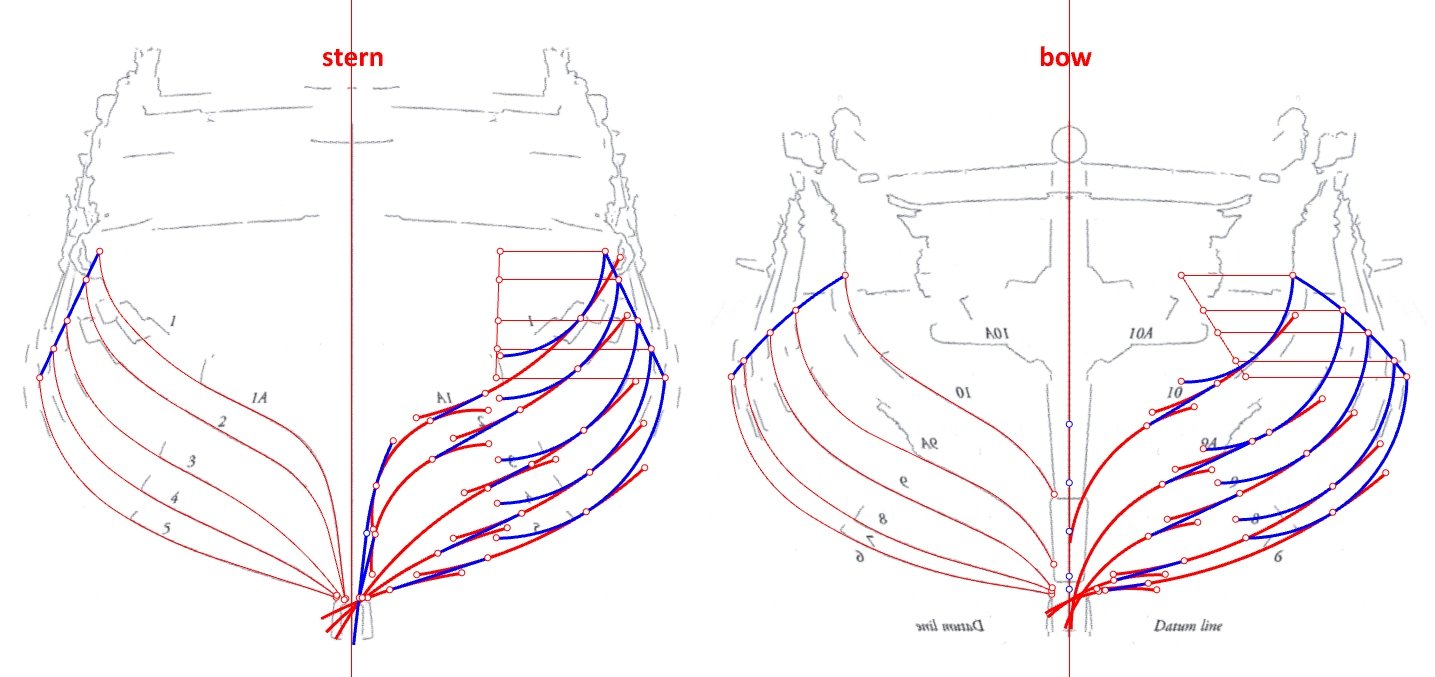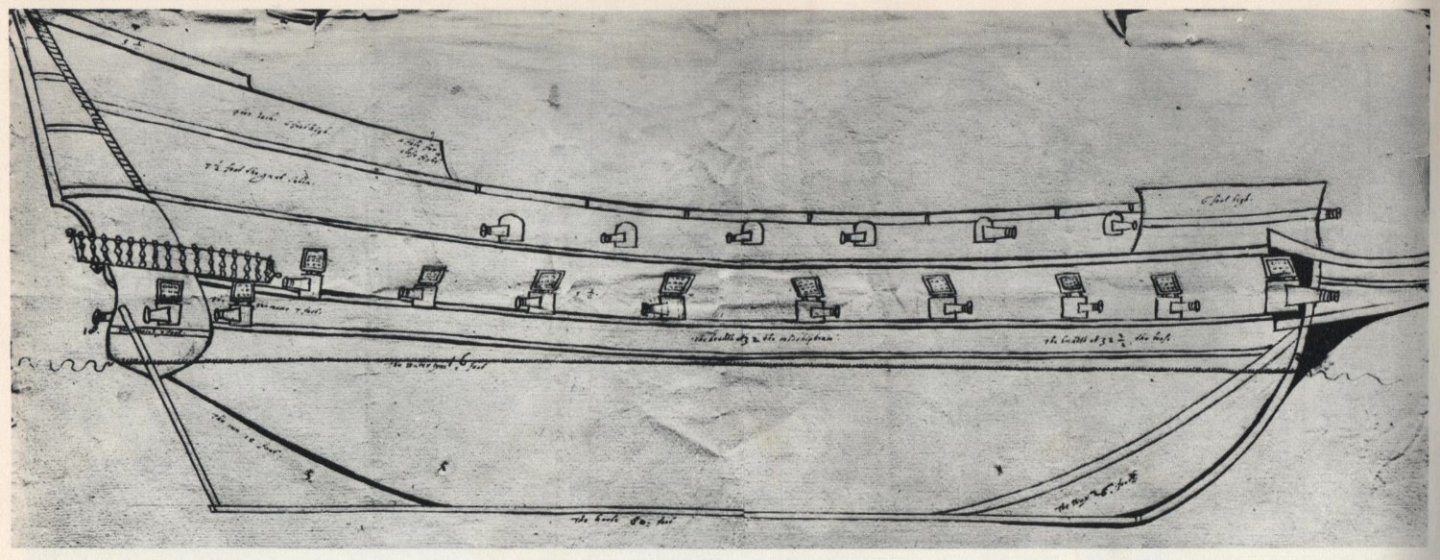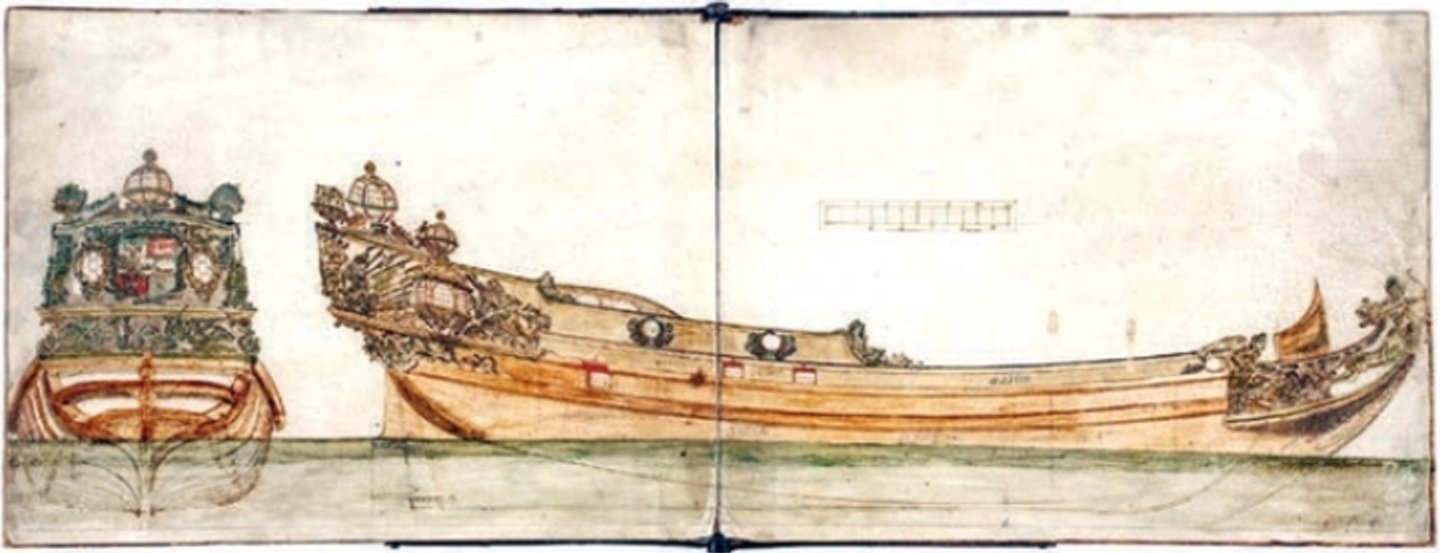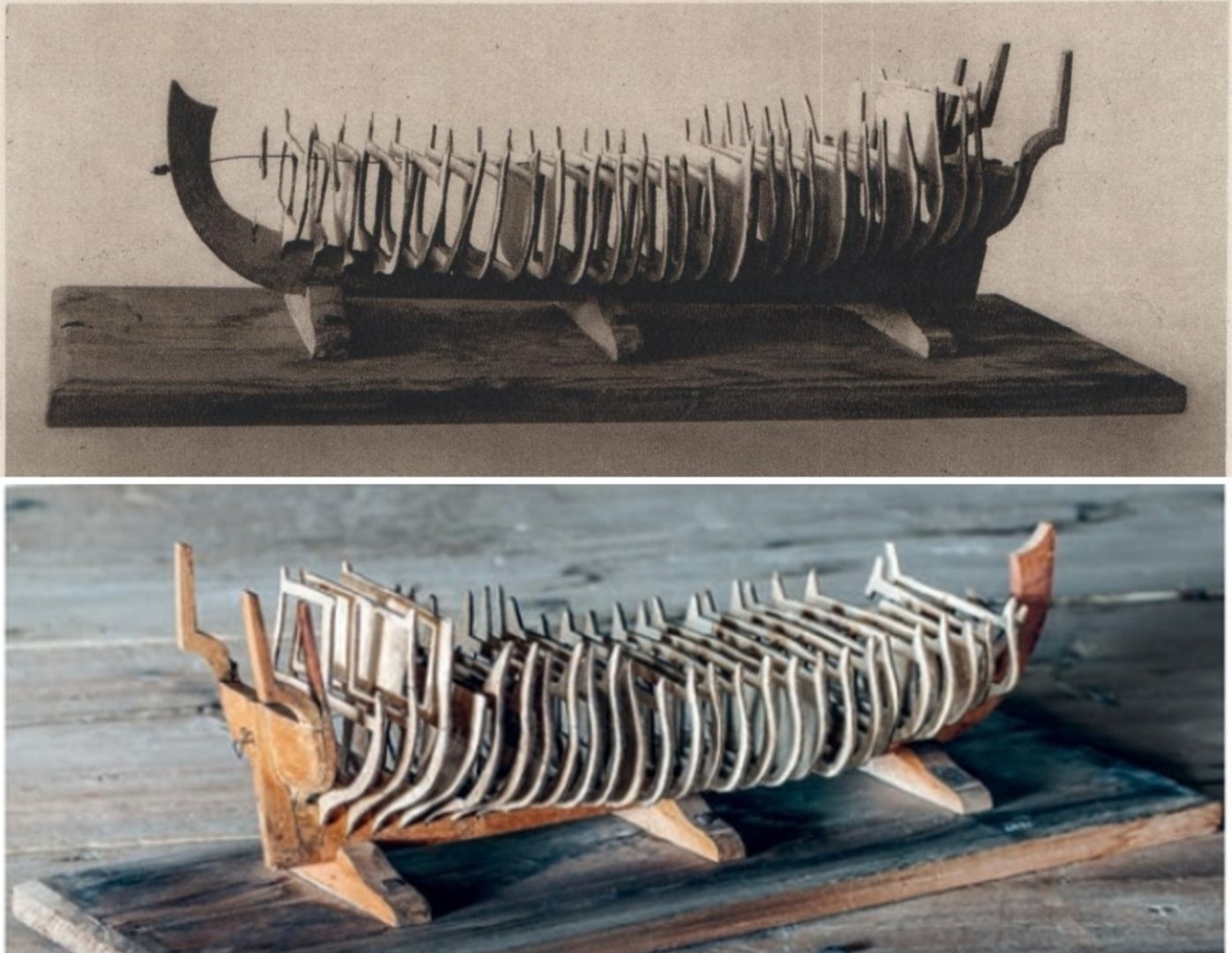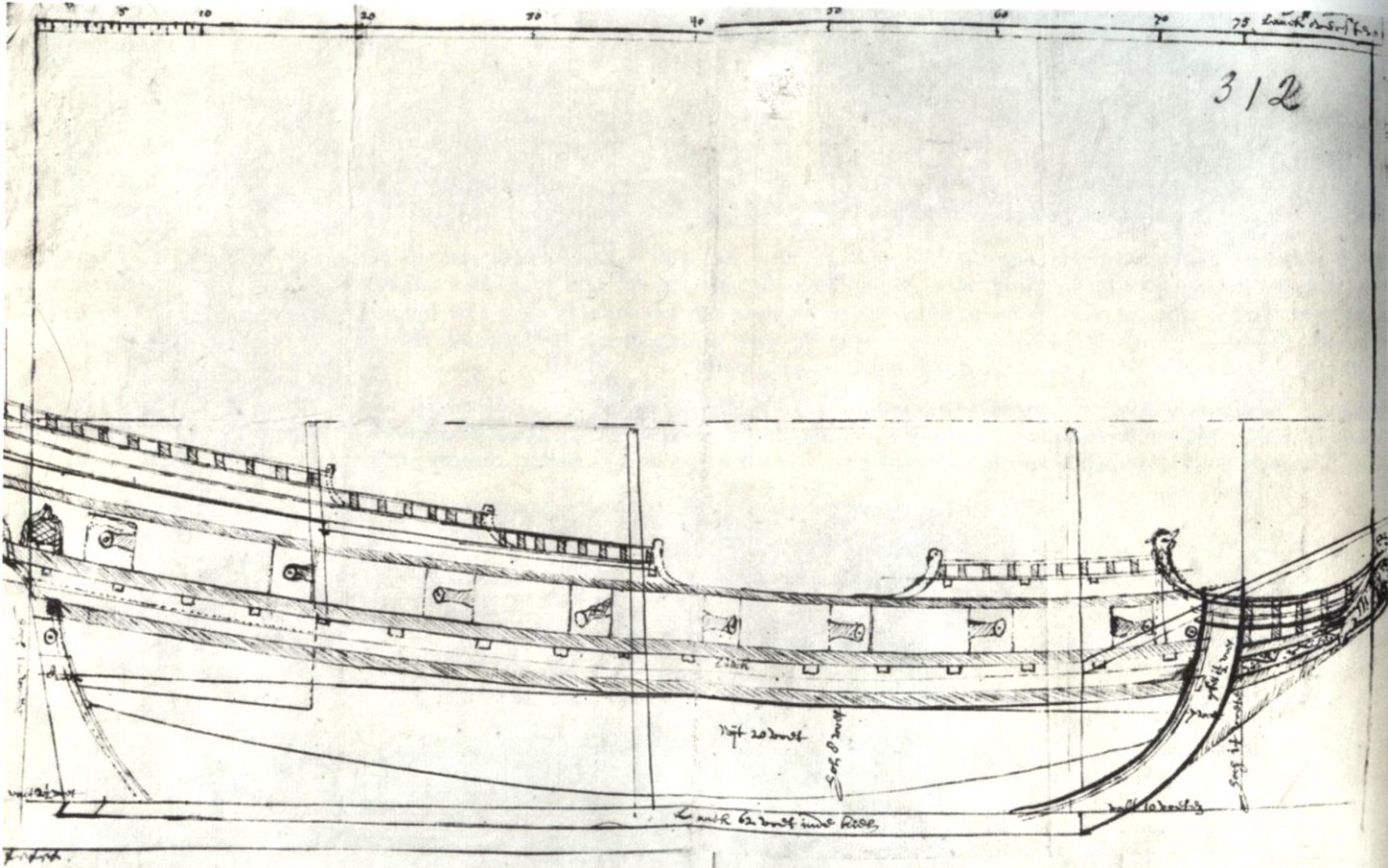-
Posts
1,002 -
Joined
Content Type
Profiles
Forums
Gallery
Events
Everything posted by Waldemar
-
.thumb.jpg.c6343966b029e7941df5b987d129aac6.jpg)
William Sutherland's concept of ship hull design, 1711
Waldemar replied to Waldemar's topic in Nautical/Naval History
Yes Jud, you are absolutely right. This thread is not so much about why hulls were shaped one way or another, but rather how this was achieved. However, this equally interesting subject can also be successfully pursued in most early works on shipbuilding or naval architecture. And it probably goes without saying that the two issues are indeed very closely linked. -
.thumb.jpg.c6343966b029e7941df5b987d129aac6.jpg)
William Sutherland's concept of ship hull design, 1711
Waldemar replied to Waldemar's topic in Nautical/Naval History
🙂 Mark, may I ask the reason for your "Confused" reaction? You don't like that the cono-cuneus curves don't fit the original model anything to write about them, you don't like that I wrote about it, or something else? -
.thumb.jpg.c6343966b029e7941df5b987d129aac6.jpg)
William Sutherland's concept of ship hull design, 1711
Waldemar replied to Waldemar's topic in Nautical/Naval History
There is "only" one small problem, these cono-cuneus curves do not match the frame scans. That's it. -
.thumb.jpg.c6343966b029e7941df5b987d129aac6.jpg)
Redoing Oseberg
Waldemar replied to KrisWood's topic in CAD and 3D Modelling/Drafting Plans with Software
Project Project curves/points toward a construction plane to intersect a surface. Pull Pull curves/points in the surface normal direction to intersect a surface. Intersect Create point objects or curves at the intersections of curves and surfaces. From the above, choose the most appropriate way for your actual need. In the last case you will only have to make surfaces from your beautiful curves beforehand, too easy to explain this. -
.thumb.jpg.c6343966b029e7941df5b987d129aac6.jpg)
Redoing Oseberg
Waldemar replied to KrisWood's topic in CAD and 3D Modelling/Drafting Plans with Software
Kris, you are becoming more and more CAD professional. 🙂 I'll give you ways to project lines onto surfaces in a moment. In the simple, soldierly words: forget it, it is all waste of time... -
.thumb.jpg.c6343966b029e7941df5b987d129aac6.jpg)
William Sutherland's concept of ship hull design, 1711
Waldemar replied to Waldemar's topic in Nautical/Naval History
For those who like theory, the following sketch may be of interest. It explains the principle of the geometrical formation of conoidal hulls in a more elaborate form, consisting of as many as two, actually three, conoids. Naturally, the surfaces of the two upper conoids are tangent to the surface of the lower conoid along two longitudinal lines, as can be seen in the drawing. This was precisely the method used in the design of the Restoration yacht under examination. -
.thumb.jpg.c6343966b029e7941df5b987d129aac6.jpg)
William Sutherland's concept of ship hull design, 1711
Waldemar replied to Waldemar's topic in Nautical/Naval History
Hopefully, for some. For me, certainly conclusive. By the way. A monograph on the Restoration yachts by Brian Lavery, Royal Yachts Under Sail, will soon be published. It may even be available in digital format now. Lavery is a trustworthy author, and this monograph is sure to become a standard work on the subject. However, I do not expect him to include an overly detailed analysis of yacht design and construction in this publication, which is after all intended for a wide audience. -
.thumb.jpg.c6343966b029e7941df5b987d129aac6.jpg)
William Sutherland's concept of ship hull design, 1711
Waldemar replied to Waldemar's topic in Nautical/Naval History
Well, this further explains nothing. Never mind, I'd better leave such explanations alone now, because I think I have something more interesting. Originally, I did not intend to verify this, but in the end, I too carried out my own reconstruction of the frame shapes of this contemporary model (Restoration yacht). This was in order to form my own view of those cono-cuneus curves. For this, I used first the conventional method of shaping frames known from the Sutherland's work, in the 'as designed' variant (as opposed to the shipyard version using templates). Either way, both of these variants used only simple geometric figures - arcs and line segments for this. In short: if the published 3D scans of the model are to be trusted, it appears that the use of the conventional method as described in the Sutherland's work gives exceptionally good results (i.e. the reconstructed lines are very well aligned with the model frames). Then I compared the reconstruction lines as printed in the publication, based on the cono-cuneus curves with the same 3D scans and the results turned out to be inferior. In this light, while I might have had some doubts before, now the proposal of cono-cuneus curves to reconstruct frame shapes has lost credibility for me. I have called the following composition 'A Perfect Fit' (lines are mine and the 3D scans of the frames profiles were taken from the study A Restoration Yacht's Design Secrets Unveiled: An examination of a ship model with reference to the works of William Sutherland, The Mariner's Mirror 2021, Volume 107, Issue 2). Not all the lines are shown in the drawing, especially the auxiliary ones. However, the most important thing is that it is perfectly possible to geometrically recontour the shape of the model's frames just from the arcs and line segments. -
.thumb.jpg.c6343966b029e7941df5b987d129aac6.jpg)
William Sutherland's concept of ship hull design, 1711
Waldemar replied to Waldemar's topic in Nautical/Naval History
I am glad that you accept my observation about conoidal hulls as early as 1600. Can you point to any period work on shipbuilding describing or even suggesting the use of "the cono-cuneus curves to develop the lower hull below the conoid"? Druxey, you may have reconstructed the general shape of the merchantman's hull based on the 'Newton' manuscript, and I have no intention of verifying this. But we are now talking specifically about bottom curves, and I don't even see a resemblance to their shapes as described in the manuscript. Your statement: "Changes in radii were later adjusted to occur at the joint lines" is quite incomprehensible. Either way, according to the manuscript, there should be no 'changes in radii' at all. -
.thumb.jpg.c6343966b029e7941df5b987d129aac6.jpg)
William Sutherland's concept of ship hull design, 1711
Waldemar replied to Waldemar's topic in Nautical/Naval History
Druxey, thank you, but to tell you the truth, I continue to see little connection between the information in the 'Newton' manuscript and the drawing and description you have provided in relation to the bottom curves. By the way, I also just discovered in the concluding remarks of the 'Newton' manuscript that conoidal hulls (i.e. with variable radii for the different frames) were nothing novel already around 1600. -
.thumb.jpg.c6343966b029e7941df5b987d129aac6.jpg)
William Sutherland's concept of ship hull design, 1711
Waldemar replied to Waldemar's topic in Nautical/Naval History
Wayne, I am glad you are comfortable with the subject matter. Information on David Balfour and his ships can also be found in the following works, among others: Niels M. Probst, Christian 4.s flåde (1996), Christian P.P. Lemée, The Renaissance Shipwrecks from Christianshavn (2006), Martin Bellamy, Christian IV and his Navy. A Political and Administrative History of the Danish Navy 1596–1648 (2006), Henrik Christiansen, Orlogsflådens skibe gennem 500 år. Den dansk-norske flåde 1510-1814 og den danske flåde 1814–2010 (2010). The works you have listed are both very important and interesting, but as I have already written, none of them defines the shape of the bottom curves in a clear way, if at all (and Battine's inventory-like compilation does not deal with the issue of hull shape design at all). This is precisely why Sutherland's work is so informative in this regard. Thank you again for your interest in this thread. -
.thumb.jpg.c6343966b029e7941df5b987d129aac6.jpg)
William Sutherland's concept of ship hull design, 1711
Waldemar replied to Waldemar's topic in Nautical/Naval History
Yes, here is my comment: two photographs of the model from around 2020 (and still with perspective distortions) are not proof of anything. Rather, I would expect a graphical or at least textual demonstration of the method, as I have done before, also at your request. And an indication of the relevant passage in the 'Newton' manuscript would not be out of place, so that comparison could be made. -
.thumb.jpg.c6343966b029e7941df5b987d129aac6.jpg)
William Sutherland's concept of ship hull design, 1711
Waldemar replied to Waldemar's topic in Nautical/Naval History
It is also worth noting that the author of the manuscript does not talk at all about how to draw these curves on paper, but immediately describes how to prepare templates/moulds for use in the shipyard. Anyway, the whole description seems to be about the non-graphic method of shipbuilding. -
.thumb.jpg.c6343966b029e7941df5b987d129aac6.jpg)
William Sutherland's concept of ship hull design, 1711
Waldemar replied to Waldemar's topic in Nautical/Naval History
The below description concerning the hollowing/bottom curves was taken from an anonymous (so-called ‘Newton’) manuscript of the English origin of ca. 1600, as published by Richard Barker in The Mariner’s Mirror 1994, Vol. 80, No 1, pp. 16–29. Except Sutherland’s work, this is perhaps the best (or maybe better: the most detailed) source from this period and from the northern part of the continent on this usually neglected issue. Unfortunately, the pertinent description is not complete either – while the shapes of the hollowing moulds were explained for both the forward and after part of the hull, the author apparently forgot to describe their use. ‘20. The length of the sweep of the hollowing moule for aftward must take his proportion from ye length of the sweep of the wrong head & must not be more then 5/6 nor less then 1/3. This arch hath a straight line joyned to it with a true touch wch serveth for the lower part of the moule, & the arch for the higher part. And so the whole moule consisteth of these two parts. The back of the moule & the higher part doth make a true square[;] the making & use whereof shall follow after. 21. The hollowing moule for forward must have no right line in it. Therefore there must be a greater arch to this lesser arch of the after hollowing moule, & the length of this greater sweep must take his proportion from the length of the futtick sweep & must not be longer then 3/4 nor less then 1/4 thereof. The use of this hollowing moule shall follow after’. Neither the author of the manuscript bothered to draw the hollowing curves for the main frame on the accompanying sketch, as can be seen in Barker's redrawing of the original. -
.thumb.jpg.c6343966b029e7941df5b987d129aac6.jpg)
William Sutherland's concept of ship hull design, 1711
Waldemar replied to Waldemar's topic in Nautical/Naval History
Okay, until then I will not accept any 'complaints' based on the brainstorm method on this interpretation, because too much has been written and is already known on this subject. 🙂 -
.thumb.jpg.c6343966b029e7941df5b987d129aac6.jpg)
William Sutherland's concept of ship hull design, 1711
Waldemar replied to Waldemar's topic in Nautical/Naval History
Inserting ready graphics is quick and easy, so one more 'design' draught. This one, from the Swedish archives, is dated circa 1615, and the technical descriptions with dimensions are in English. Here, too, attempts have been made to achieve the effect of perspective. And the jump to geometrically perfect 18th century plans didn't happen overnight. -
.thumb.jpg.c6343966b029e7941df5b987d129aac6.jpg)
William Sutherland's concept of ship hull design, 1711
Waldemar replied to Waldemar's topic in Nautical/Naval History
Martes, coincidentally this Swedish yacht designed by an Englishman, can be another excellent example revealing the drawing practices of the era. You can try to compare the shape of the floor/hollowing curves in the stern area as seen on the plan and on the model. Even just by eye. These are for the same ship by the same designer. -
.thumb.jpg.c6343966b029e7941df5b987d129aac6.jpg)
William Sutherland's concept of ship hull design, 1711
Waldemar replied to Waldemar's topic in Nautical/Naval History
Mark: The watercolour (plan) is considered a design/proposition for the decoration of the yacht. The design set also includes a simple model made of wood and cardboard, normally unnecessary for an experienced designer himself, so rather intended to be shown to the client. It is kept in the Skokloster castle, Sweden. Martes: This looks like a bit of a clumsy attempt to gain depth in the image (perspective), and to show elements not normally visible in the profile view. The same could be true of the Swedish yacht, but here we have in addition transom beams with an arched profile. On the other hand, this curved shape could also be a way of showing the shape of these beams as seen from below. There is not yet a consistent application of standard geometric projection methods. Either way, the axial skeleton elements should, in my opinion, definitely remain in place. -
.thumb.jpg.c6343966b029e7941df5b987d129aac6.jpg)
William Sutherland's concept of ship hull design, 1711
Waldemar replied to Waldemar's topic in Nautical/Naval History
No, no, no. I would rather opt for a galley-style stern shape. A noble stern for a noble ship for noble people. -
.thumb.jpg.c6343966b029e7941df5b987d129aac6.jpg)
William Sutherland's concept of ship hull design, 1711
Waldemar replied to Waldemar's topic in Nautical/Naval History
In addition, and for comparison, another design drawing made around 1660, but this time by an equally professional shipbuilder Jakob Jakobsson Prunk of the Dutch origin. Frame profiles were not needed in this case at all, as this 18-gun frigate was most likely to be built in the Dutch fasion, i.e. by the shell (bottom-first) method. But again, look at the draughtsmanship standard (Swedish archives). -
.thumb.jpg.c6343966b029e7941df5b987d129aac6.jpg)
William Sutherland's concept of ship hull design, 1711
Waldemar replied to Waldemar's topic in Nautical/Naval History
True. As an example of a ship drawing from the 17th century, I still include below a plan of a yacht from 1665, which was built at the Götheborg shipyard by an Englishman, Francis Sheldon. This is the oldest extant ship plan in Sweden showing the profile of the frames (stern only). As you can see, the drawing standard is still far from the precise 18th century convention (Swedish archives). I will no longer carry out a reconstruction of this shape, but the frame profiles indicate quite clearly that the designer used the conventional frame-moulding method. -
.thumb.jpg.c6343966b029e7941df5b987d129aac6.jpg)
William Sutherland's concept of ship hull design, 1711
Waldemar replied to Waldemar's topic in Nautical/Naval History
In fact, I do not insist on accepting or confirming this interpretation. But the mere awareness of such a possibility might just come in handy for you while potentially inspecting some period plan. -
.thumb.jpg.c6343966b029e7941df5b987d129aac6.jpg)
William Sutherland's concept of ship hull design, 1711
Waldemar replied to Waldemar's topic in Nautical/Naval History
The Danish ship Prins Christian (renamed 1673 as Christianus Quintus) was built on contract at the Neustadt shipyard. Sorry, but if the content of this thread so far is not convincing enough, it remains to refer to Sutherland's original work. I may find some more examples, but by accident rather than by deliberate search. The copy of the plan of the French ship made available is quite poor and the lines are not quite clear. Anyway, just a note here that this was a transitional period in France at the time as far as the shape of the stern is concerned and it may be some strange hybrid. Why not try to interpret this shape yourself? -
.thumb.jpg.c6343966b029e7941df5b987d129aac6.jpg)
William Sutherland's concept of ship hull design, 1711
Waldemar replied to Waldemar's topic in Nautical/Naval History
I am not sure that the example with the French ship is quite relevant. This ship was built by the designer René Levasseur in 1692. By this time, the French shipbuilders were already using newer design methods, using geometrical diagonal lines, unlike the British, who were still using one frame-moulding variant or another for quite a long time. Firstly, as can be seen from the drawing, the lines of the French ship were reconstructed in the British fashion (frame-moulding), so it is certainly not an accurate representation of the hull shape. Secondly, the problem of bottom curves was solved in a completely different way in the French method, but that's another story....
About us
Modelshipworld - Advancing Ship Modeling through Research
SSL Secured
Your security is important for us so this Website is SSL-Secured
NRG Mailing Address
Nautical Research Guild
237 South Lincoln Street
Westmont IL, 60559-1917
Model Ship World ® and the MSW logo are Registered Trademarks, and belong to the Nautical Research Guild (United States Patent and Trademark Office: No. 6,929,264 & No. 6,929,274, registered Dec. 20, 2022)
Helpful Links
About the NRG
If you enjoy building ship models that are historically accurate as well as beautiful, then The Nautical Research Guild (NRG) is just right for you.
The Guild is a non-profit educational organization whose mission is to “Advance Ship Modeling Through Research”. We provide support to our members in their efforts to raise the quality of their model ships.
The Nautical Research Guild has published our world-renowned quarterly magazine, The Nautical Research Journal, since 1955. The pages of the Journal are full of articles by accomplished ship modelers who show you how they create those exquisite details on their models, and by maritime historians who show you the correct details to build. The Journal is available in both print and digital editions. Go to the NRG web site (www.thenrg.org) to download a complimentary digital copy of the Journal. The NRG also publishes plan sets, books and compilations of back issues of the Journal and the former Ships in Scale and Model Ship Builder magazines.





